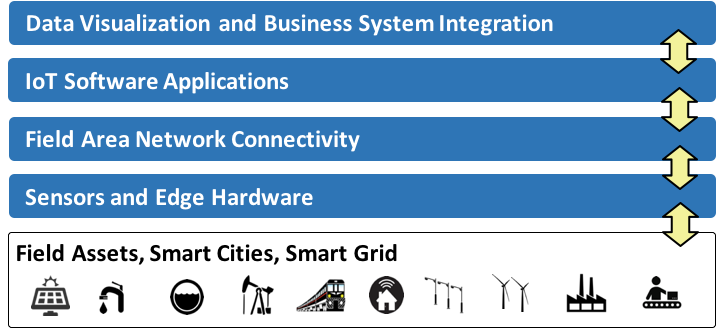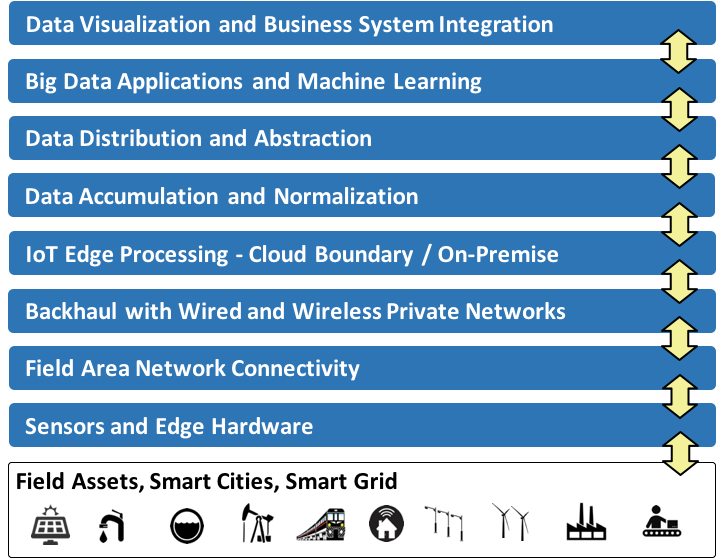Some experts that grew up in the networking industry argue that they have been building end-to-end systems for many years, and that IoT is nothing new. But as was pointed out in our “IoT Tipping Point” article, we have reached a tipping point with new low cost sensors and processing hardware, the many wireless and wired connectivity solutions available, the advances in cloud and low cost back end computing, and with the tremendous progress in open source software, analytics and machine learning.
In the “old world”, we connected 10’s or 100’s of devices through deliberate networking and we managed and controlled these systems with varying levels of control and automation. Many industries have evolved these solutions to a high level of sophistication, to the point that there is little distinction between what they have and “IoT”. But this is not to say that IoT is meaningless. It is rather a mega-trend.
With the IoT hardware and software stack now at our disposal, we can think of deploying 1,000’s, 10,000’s or even millions of devices with much simpler deployment, configuration and and operation and then process the high volume, velocity, and variety data they process at low cost to create new services for customers, improve our operations and create new markets.
A comparison of “the old way” with the “new way” is worthwhile:
The Old Way
Using IoT Technologies
Still, how IoT works is not such a big stretch from historical systems. The real difference is in the low cost of deployment, the simplicity of building systems with modern tools, and our ability to process all the data created at a low cost with easy to deploy software infrastructure, back end applications and machine learning. A simplified representation of an IoT stack looks like this:

With this stack, sensors and edge hardware are connected to the remote industrial or consumer application, these devices are networked to a centralized processing location, where a simple IoT application is running, and this application interfaces with user visualization tools and back end business systems.
A more comprehensive implementation of the IoT stack would take the form of the expanded stack below, where more comprehensive wide area networking layers, cloud-edge / premise-edge processing, data accumulation, and data distribution layers are added. Many successful IoT solutions can be deployed with relatively simple solutions, but understanding how you would expand your solution when needed can save cost and headaches down the road. This more complete stack will be dissected in a later section.

